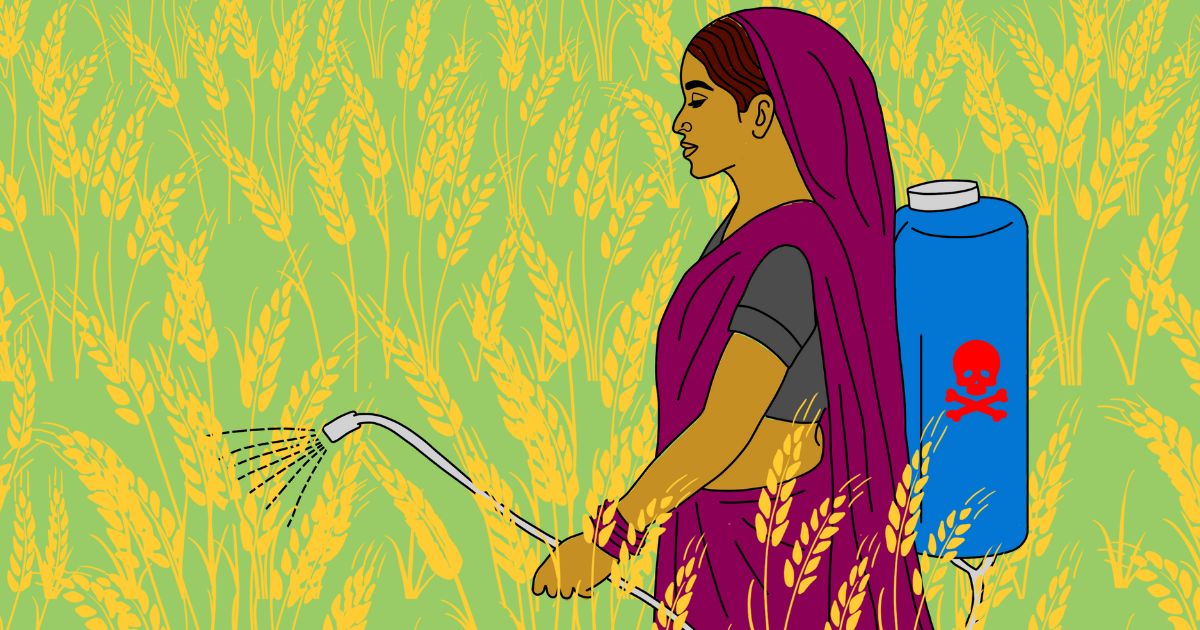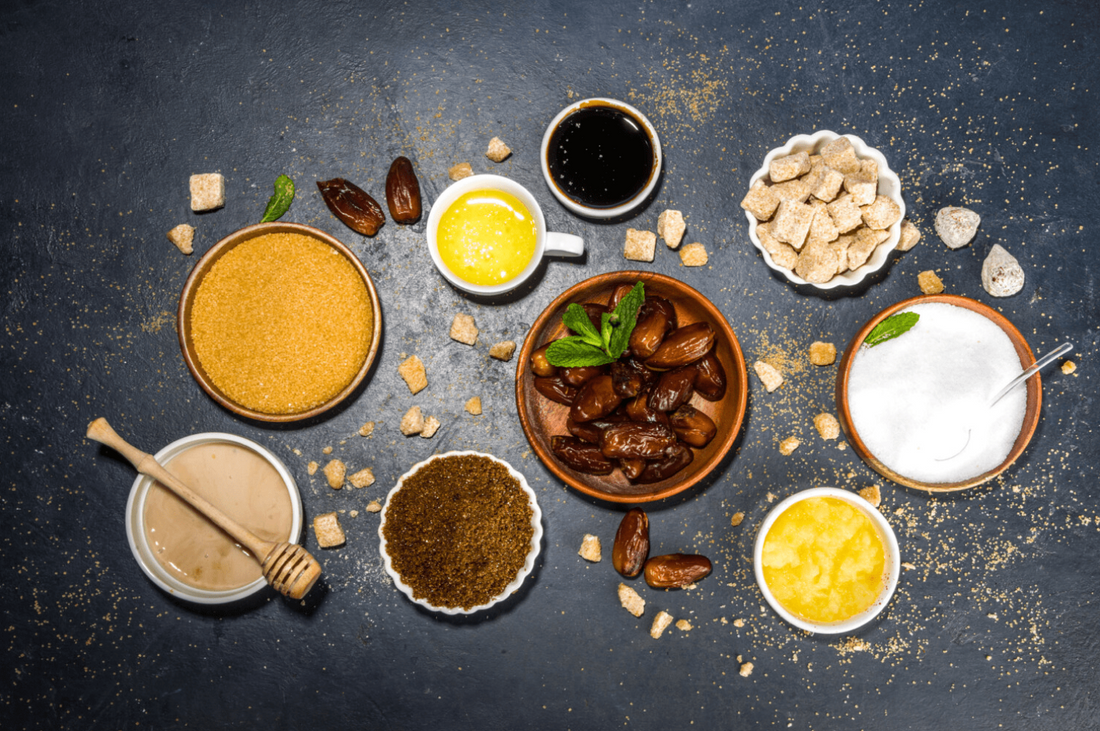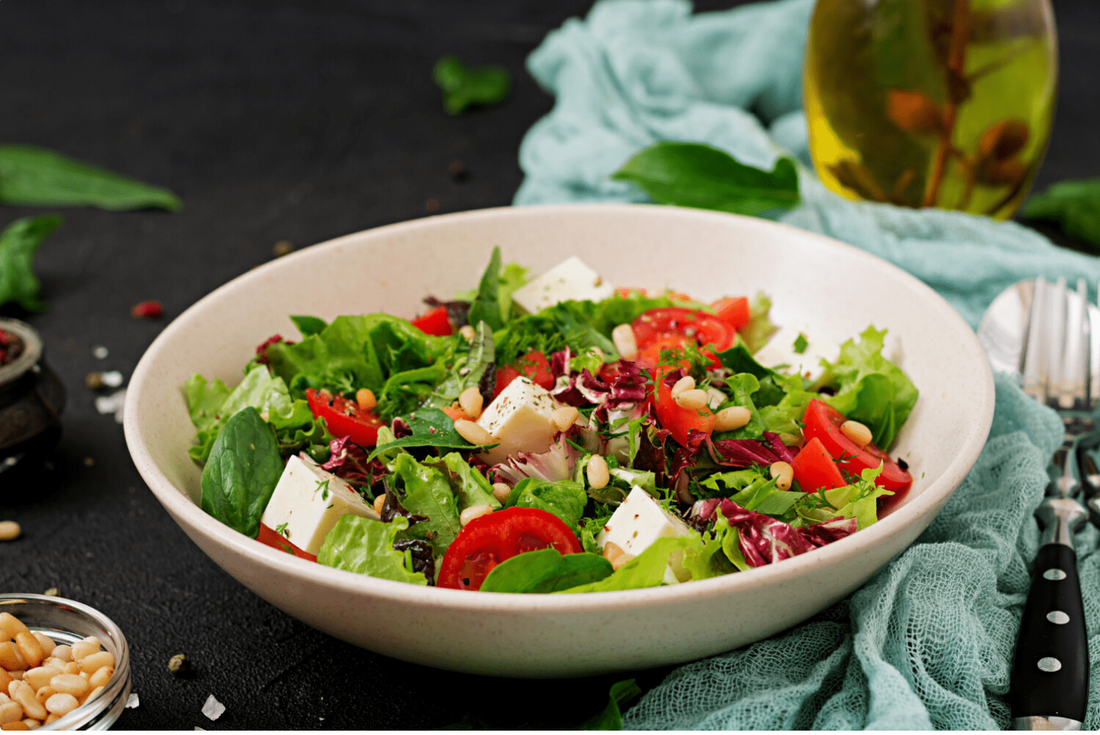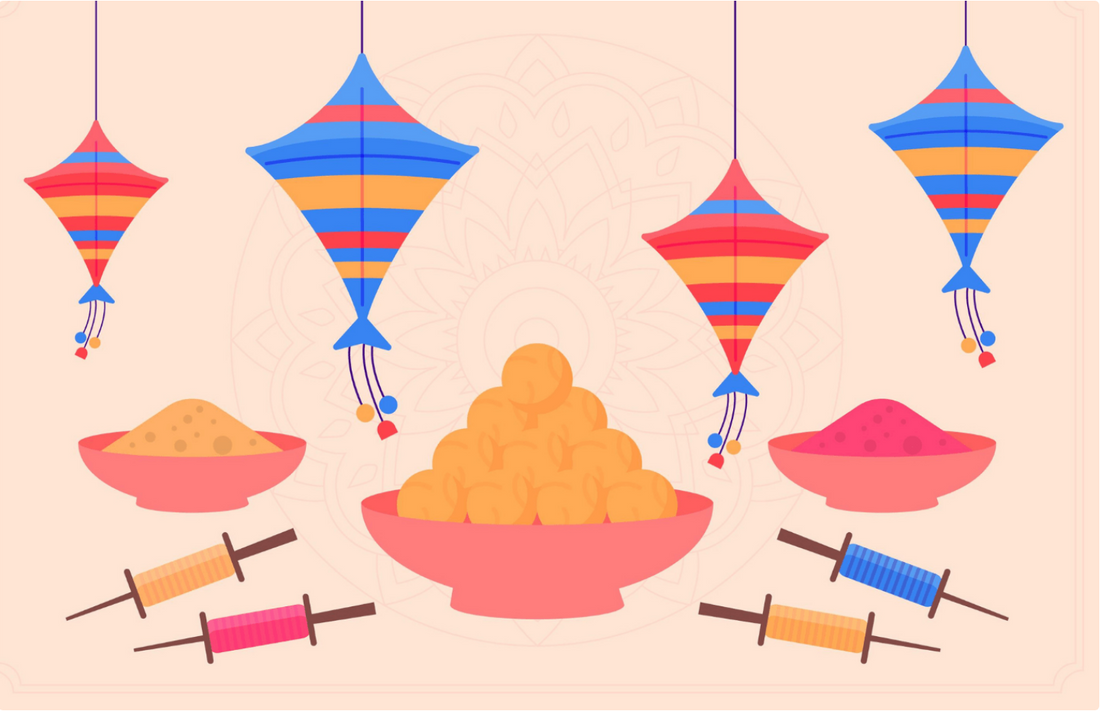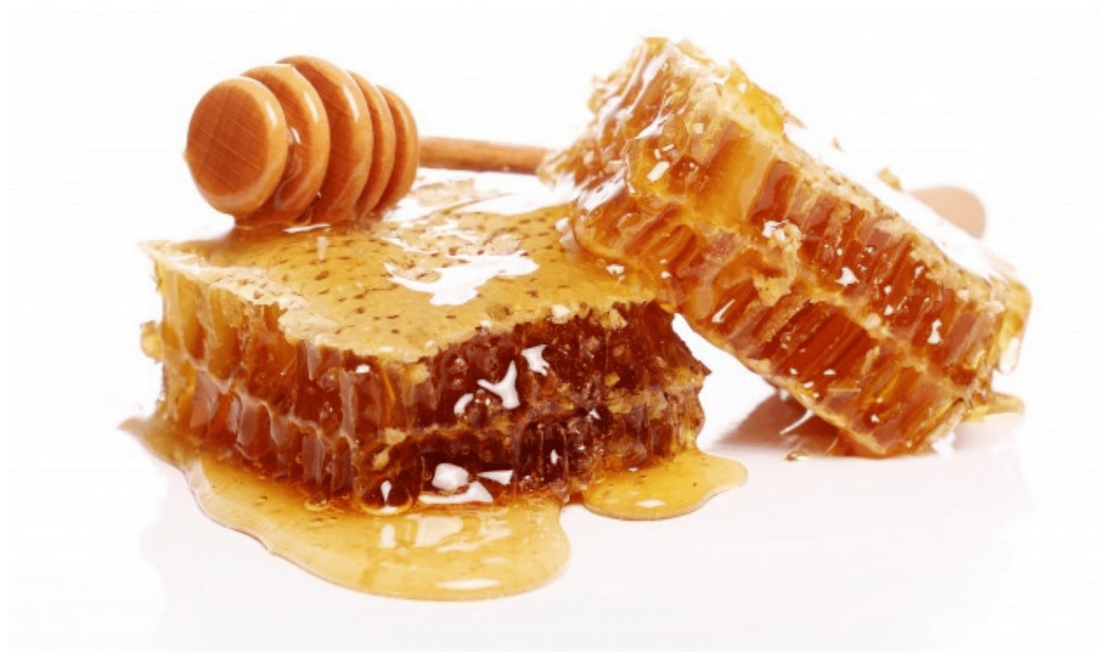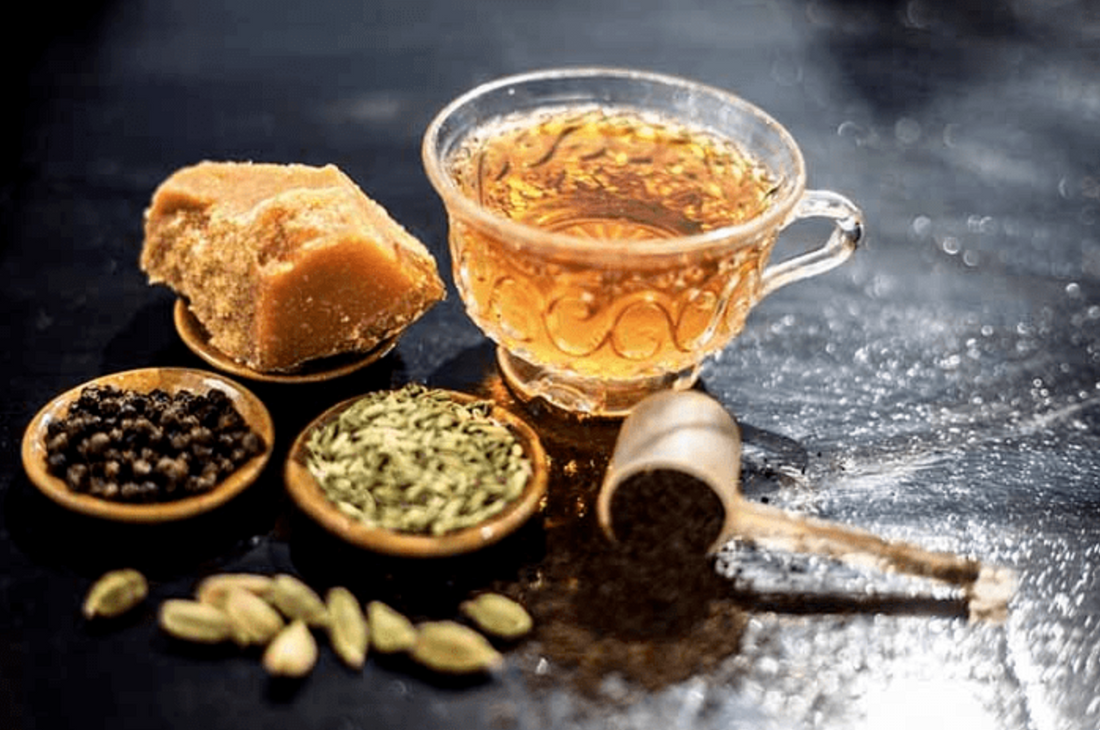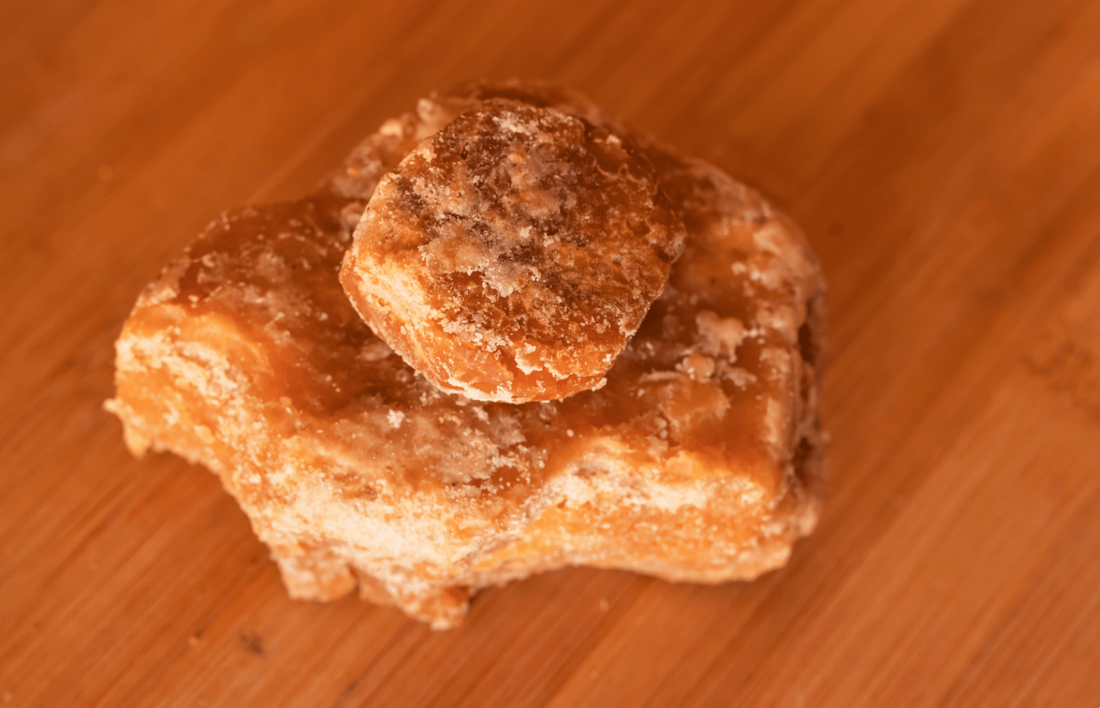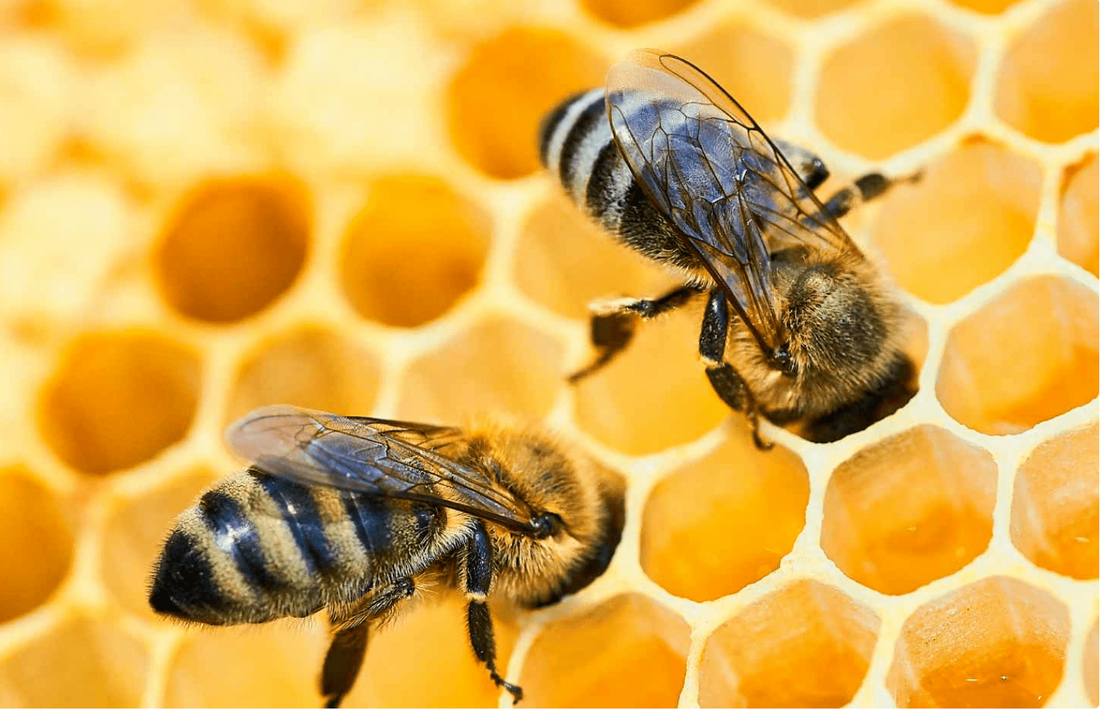Articles
Are Natural Sugar Substitutes The Best Alternative To The Sugar In Your Diet?
Blessed indeed are those of us who do not have a sweet tooth, a rarity indeed. But for the rest of us who love to indulge in desserts anytime, there can be a workaround in the form of natural sugar substitutes. The good news? These are packed with benefits too. Let us get to that in just a little bit. Before everything- What are sugar substitutes? Refined white sugar has been linked to serious ailments such as diabetes, obesity, and heart diseases. Now is it easy to wipe it off one’s diet? Practically no. Natural sugar alternatives with lower fructose and calorie levels such as xylitol, stevia, coconut sugar, honey, and jaggery can still be used to sweeten your favorite dessert. Dangers of using artificial sugar substitutes- Artificial sweetener molecules are similar to the regular sugar molecules that latch on to our sweetness sensory receptor. Since they are generally too different from sugar; our bodies cannot break them down into calories causing us to eat more, gain weight and make it difficult to digest the real sugar needed. Further, harmful chemicals used in food processing technology such as sulfur dioxide, phosphoric acid, and calcium hydroxide can be detrimental to one’s health. Why opt for natural substitutes like Honey and Jaggery? Natural sugar substitutes like organic jaggery powder or coconut sugar have a good dose of antioxidants, iron, calcium, and potassium. Coconut sugar is extracted from the sap of coconut palm and contains minerals like iron, zinc, calcium, and potassium. It also has a lower GCI than sugar. Natural Stevia sweeteners can lower blood pressure and blood sugar levels as well. The monk fruit sweetener contains a compound called mogroside is an antioxidant with anti-inflammatory properties. Honey has phenolic acids and flavonoids which also have anti-oxidant properties. How do you make a sugar substitute work for you? Well, natural, pure, and organic sugar substitutes need to first be a constant in every pantry. Most baking recipes can include jaggery, and maple syrup in the place of sugar, one may also include whole fruits in bread, cakes, and brownies. Most Indian desserts work well with jaggery, coconut sugar, or honey. Dates are another great sugar alternative. Use date paste in marinades, sweet sauces, and baking as well. Dates are rich in fiber, minerals, and vitamins. Now what is ideal is sticking to moderation. Replacing white sugar in your diet is indeed a strong step in the right direction but certainly, it needs to be followed by some don’ts. Stay away from aerated drinks and colas, since these have the highest sugar levels. Choose to munch a whole fruit as against a juice. Avoid any sweetener for your beverages. Store-bought baked goods are also high in sugar. Stay away from them. Now, none of this means that you should not have anything sweet. Balancing what you crave with something wholesome and healthy yet satisfying your craving is not hard. You just need a little forethought before you grab that delicious-looking pastry or a gulab-jamun!
Learn moreThe Magical, Mystical And Delicious Adventure Of Following A Healthy Natural Diet
“You are what you eat” is not just a proverbial statement brought up in discussions of healthy eating. It is the very essence of how an individual can start a sustainable eating routine that propels him or her towards their health goals. A diet is merely the sum of all constituents of food that goes into various meals of the day. The healthier it is -I e the more natural and pesticide-free food one consumes the better it gets. Do not get started right away on counting calories per meal. Carrying around a calorie calculator before meal times can be disheartening and with time, something that can hurt healthy eating. Contemplate how to start a healthy lifestyle overall, not merely a diet. We all deserve a fulfilling life first. Consuming natural pesticide-free nutrient-rich food lifts one’s spirits and motivates the individual to embrace healthy eating for life. Controlling how much goes in will have to follow. It’s not just about eating healthy, it’s about living healthy. Never associate every meal with the right calorific requirement of a person. Chemical-free natural food increases the quality of what is consumed and guarantees good health in the long run. Focus on quality over quantity first. Learn to love your body and give it what it deserves. Take a good long look at the mirror every morning and tell yourself that you are unique and special. Additional weight can be dropped, and belly fat or arm fat can be dealt with-provided you have a positive mind. Determine to fix nutritious meals and take charge of your diet one meal at a time. Now, what is nutritious? Simple. Refrain from preservative-loaded packaged food and ensure your grocery shopping involves only organic pesticide-free food grains. Cold-pressed oils, millets, and organic jaggery over refined oil, rice, and sugar. This translates to more wholesome meals. Put your mind to just that one meal at a given time. Make your healthy meals fun and adventurous. There is no end to playing around with fresh and colorful fruits and vegetables. Be it a salad, juice, or smoothie. You can get started with one kind every morning. Do you love your spices? Whip up a healthy bhel or crunchy channa/peanut chat salad too during tea time. Kindle your creative streak a little. Remember that weight management and stepping into healthy eating habits is a journey in life. One that needs to be flexible and sensibly executed one day after another. Understand your erstwhile lifestyle well, consider all factors, and introduce an exercise form into your daily routine too. If you do feel the need to indulge on an odd day, do it but in moderation. Making a dietary change is a mental exercise first, reaffirming an optimistic mindset is critical to positively impact your lifestyle. Stay in control, understand what will work for you, and then plan. Above everything, work on yourself with an open accommodating mind. Your body will listen to you.
Learn moreWe Are Same Same, But Different! How Makar Sankrant/Uttarayan/Pongal Is Celebrated With Similar Yet Different Recipes Across India?
Makar Sankranti or Uttarayan is celebrated across the country in different ways and the cultural significance of the festival varies geographically across states. The festival marks transition of sun into the Capricorn zodiac sign, the sun begins its northward journey marking the end of the Winter solstice. This is usually the 14th or 15th of January. (Makar means Capricorn and Sankranti is transition) The god is worshipped and revered. Makar Sankranti is also celebrated as the harvest festival. Different states celebrate this festival as per their local culture, traditions, and needless to say, the best Indian food. Here is how various states across our country celebrate this grand festival. Maharashtra : Makar Sankranti in Maharashtra is celebrated by exchanging “til-gud” (sesame seeds and jaggery) as a mark of sweet beginnings, to forgive and forget misgivings. Aromatic dry ingredients such as dry roasted sesame seeds and crushed peanuts are sweetened with jaggery and laced with cardamom for an aromatic and healthy laddoo. One of the top contenders for the best Indian dish, is it not? Andhra Pradesh and Tamil Nadu : The festival is celebrated as “Pongal” for 4 days, beginning the festivities with a “bhogi” where old and used items are discarded. Since it is primarily a harvest festival, the cows and the sun god are worshipped during these days. Families come together to nurture new beginnings, colorful rangoli adorn entrances, kites flown, sweet and savory “Pongal” is prepared. Sweet Pongal is prepared with fresh rice, jaggery, cashews, ghee, and a dash of milk. Savory Pongal is made with rice, ginger, and whole spices. An absolute delight of wholesome healthy Indian food! Karnataka : Sankranti is celebrated in Karnataka with a ritual called “Ellu Birodhu” where women exchange “Ellu Bella” (regional delicacies made using freshly cut sugarcane, sesame seeds, jaggery, and coconut) with other families. Farmers decorate their bulls and cows in colorful costumes and celebrate the arrival of spring. Punjab : The festival of Lohri is celebrated as the harvest season of Rabi crops in the state and the end of winter. A huge bonfire that symbolizes the Sun bringing in warmth is made, with people singing folk songs and dancing around it. It is traditional to eat Makki di Roti with Sarso da Saag, sweets made from jaggery and sesame seeds. Makki di roti is a flatbread made out of maize flour and Sarso is mustard greens. This is one of the best Indian dishes ever for winter, with its nutrient content and immunity-boosting qualities. Bihar and Jharkhand : People from these two states bathe in rivers and ponds on the first day and feast upon seasonal dishes (made with til and gud) as a celebration of a good harvest. The second day is celebrated as “Makraat”, where a special khichdi with rice, lentils, and winter vegetables such as cauliflower, peas, and potatoes are prepared and is served with chokha (roasted vegetables), papad, ghee, and achaar (pickle). West Bengal, Assam, and Northeast : In West Bengal, Sankranti, also known as Poush Sankranti is celebrated as a harvest festival. During Poush Parbon, traditional Bengali sweets are made with rice flour, coconut, milk, and ‘khejurer guru (date palm jaggery). Magh Bihu or Bhogali Bihu in Assam marks the end of harvesting season in the month of Maagha (January–February). During Magh Bihu people of Assam make cakes of rice with various names such as Shunga Pitha, Til Pitha, etc., and other sweets of coconut called Laru. The highlight of these healthy Indian recipes made during the harvest festival is that freshly harvested grains and vegetables, seasonal to the state is used. While the essence of the celebration unifies all states, the manner each state celebrates this festival is unique and diverse!
Learn more5 Ways Of Including Forest Honey In Your Diet?
Undoubtedly, Forest honey is lot more exquisite and packed with multiple health benefits, as the bees collect nectar from wild oak trees, oak holm, and cork oak trees. We have discussed at length the benefits of natural forest honey in our previous blog. Have you grabbed a jar of the best forest honey yet? Do not give it another thought, for it can sit in a cool corner of your pantry for months to come.While enough has been said about the goodness of consuming forest honey, how can it be included consciously as a part of one’s daily diet remains an inadequately answered question. This golden delicious, goodness-filled liquid can replace sugar, for the most part. Cooking with honey can enhance the taste and texture of many dishes removing the misconception of using honey in tea varieties alone! Use it as a dip, bake with it, add it as a dressing, or virtually anything else, provided you just learn how much needs to be added into what you plan to whip up! Five super-easy tricks and hacks to include forest honey in your daily diet- 1. Well-the obvious. Add it to your beverages, wait a minute, soups too! Forest honey is an excellent alternative to sugar and hence it can go into your hot cuppas and your breakfast juices. A small tip- try and do not load up your drink with a lot of honey. Say if you normally use a spoonful of sugar stick to the same quantity with honey. This will help bring out the natural flavor of whatever you are having. A dash of honey in soups made with carrot, squash or sweet pumpkin, potato; those with a slightly sweet taste can taste heavenly with a bit of honey in it! 2. Use it in your bakes Are you someone who bakes your regular bread and cakes? Well, bring on the world of forest honey into your oven! Honey adds a distinct but mild flavor to quick-baking, non-yeast bread, shortcakes, cookies, etc, which can be delightfully easy to prepare and absolutely a hit with the kids too. 3. Use it as a spread- Try and make honey butter at home- Just whisk together four parts of room-temperature butter with one part of honey. Mix and match with smaller batches if you want to be a little careful. Use this as a dip for cookies, biscuits, or sweet crisps. It can also be drizzled on fruits such as banana, apple, avocadoes, or in a bowl full of dry fruits. Honey can also be used on toast, pancakes, and bread of all varieties and consumed. 4. Super simple munchies- Since honey retains its stickiness and texture even after applying heat, it can be used to make granola, trail mix bars, or cereal bars! Just toss together oats/ whole grains, dry fruits and seeds, or whatever healthy bits you have in the kitchen, coarsely grind them all, and add honey to it. Now balance the taste of all ingredients added to the sweetness of honey for the perfect snack. 5. Honey as your daily medicine- The hot toddy is legendary! An ultra-hot steaming mug of green tea, cinnamon, nutmeg, cloves, and a spoon or two of pure forest honey can drive away your fatigue, handle the beginnings of flu! Honey with hot water and a dash of lemon can help enhance your metabolism, honey in milk can soothe you to into a deep night’s slumber. You can just explore possibilities with this liquid magic!Some “sticky tips” you may want to remember- Grease the spoon/container you use to measure to while scooping out honey from the jar. This way it gets off easily. Quickly cut and shape the homemade honey snack bars so that they remain soft and chewy. Always mix honey in warm liquids so that it dissolves easily. The best forest honey can easily become the “star” ingredient of your pantry, something you cannot ever do without. All it takes is a little bit of experimenting, after all, there is “sweet” nothing to lose, is it not?
Learn more5 Simple Ways Of Including Jaggery In Your Diet
Simple ways of including jaggery in your diet We live in a time where everyone is trying to find exclusive products for health benefits; when the most beneficial addition to our diet is sitting right in front of us, the good old dadiji’s favorite – Jaggery (Gur). In our last article, (Is it time to switch from Sugar to the Goodness of गुड़ (Jaggery))? , we clarified how and why it is high time to shift from sugar to jaggery now. Here, let’s talk about how you can include this magic food in your daily diet. 1.Water and Jaggery– It cannot get simpler than this. Add a pinch of jaggery powder to your early morning warm water and voila! It will aid the bile movements and will help in controlling the acidity, all the while making the water sweet and tasty. We all know that a glass of warm water in the morning helps in normalizing body temperature and aids metabolism. Try adding a pinch of jaggery powder to it and thank me later 2.Jaggery and turmeric – Both the ingredients are well known individually for their benefits, but it is a lesser-known fact that they work like a charm together as well. Just take a bit of jaggery powder, add a pinch of turmeric to it, roll it in a ball and pop it every morning; it will work wonders for your immunity and for flushing out toxins as well. 3.Jaggery and Peanuts – We have all eaten this combination in some form or the other in different names – chikki, nut butter, etc. Peanuts are high in protein and Jaggery being high in iron and calcium, complement each other like “Vikram and Vetal”. Heat some jaggery powder, add peanuts to it and cool in pancake form for later consumption. 4.Roasted gram with Jaggery –If you are looking for a weight loss snack, gram with jaggery will be your best friend. Roasted gram is high in protein, fiber and vitamins, which helps in keeping the muscles strong and the calorie count low. Mix jaggery powder with some roasted gram, store it in a bottle and save for healthy snacking during busy hours. 5.Ghee with Jaggery – This is the classic desi combination which can flush toxins out of your body in a jiffy. The duo will help keep your skin glowing, nails and hair healthy as well. It also helps in reducing the acidity in the body. Include both in your lunch or dinner with rice/roti. 6.Fenugreek seeds with Jaggery – Methi seeds with Gur are one of the best combinations for your hair. Winters tend to take away the shine and moisture from the hair, but vitamins from Fenugreek combined with iron and potassium from Jaggery can help prevent this problem to a great extent. We hope that we’ve made your life a little simpler. Buy your natural Jaggery here: https://safeharvest.co.in/products/jaggery-powder
Learn moreIs It Time To Switch From Sugar To The Goodness Of गुड़ (Jaggery) ?
Is it time to switch from Sugar to the Goodness of गुड़ (Jaggery) ? The exquisite smell of jaggery from any Indian kitchen announces with it the arrival of good things. Be it a small prasad offering at the mandir, or the celebration of a job promotion – the sweets made with jaggery always work like a charm. From Telangana’s Parvanam to Bihar’s Tilkut – Jaggery, for centuries has been the hero ingredient in sweets across the entire country, leaving its competitor sugar, way behind in the race of taste and health. Sugar, rightfully so, has received the treatment of being the step-ingredient, but is still used as a sweetener in the everyday chai-coffees, not far beyond that. The convenience of sugar makes it much easy and less tedious but jaggery’s taste will definitely make all the effort worth it. How different are sugar and jaggery really? While both sugar and jaggery require sugarcane juice to be boiled, the process starts to take different turns after this. To give sugar the white and clear texture, it is boiled with bone charcoal, which absorbs the unwanted particles. The juice is then crystallized into cubes, the form which we consume. In case of jaggery, the sugarcane juice is left to boil and thicken into a paste which is later poured into moulding containers, which solidifies to gives us the blocks of jaggery that we consume. All it takes is the one step difference to change the sucrose consistency. While sugar consists of simple sucrose which is instantly absorbed in the blood to be released as sudden bursts of energy, jaggery’s complex and longer chains of sucrose ensures that it is digested slower than sugar and the energy is released periodically. Jaggery will help you in many ways, some of which are 1. Detoxifying the liver : Being a natural body cleanser, Jaggery reduces the workload on liver 2. Prevention of Constipation : Jaggery helps in prevention and relieving constipation as it activates the digestive enzymes in the body and stimulates bowel movements 3. Controlled blood pressure : Jaggery is rich in potassium and sodium, which are extremely important for maintaining the acid levels in the body 4. Weight loss : Being the rich source of potassium, jaggery helps in balancing the electrolytes, also in building muscles and boosting metabolism 5. Prevention of anemia : Iron and folate are 2 minerals which are abundantly present in Jaggery, and they ensure normal levels of red blood cells 6. Increased immunity : Jaggery is full of antioxidants, zinc and selenium that help in avoiding free radical damage and in increasing resistance against infections Coming to the million dollar question, how natural jaggery is better than jaggery produced with synthetic additives? When the Sugarcane juice is boiled, Sulphur is added to the solution to clear the solution of impurities and other chemicals like Sodium carbonate, sodium bicarbonate, sodium hydrosulphite and phosphoric acid are also added to enhance colour. While in the natural jaggery, lady finger plants are used to clear the impurities from the solution to ensure no chemical enters your body while consuming Jaggery. To ensure that you get all the benefits of this amazing food, order natural jaggery from Safe Harvest.
Learn moreTo Bee Or Not To Bee
20th May was declared by the United Nations as World Bee Day to raise awareness of the importance of pollinators, the threats they face and their contribution to sustainable development. Pesticides have long been a matter of concern for the existence of bees, the major pollinator of food crops. Issues like Colony Collapse Disorder have reduced bee population by 40% and the major cause for this is pesticide poisoning through exposure to pesticides used on crops or for in-hive mite control. Bees pollinate 70 of the around 100 crop species that feed 90% of the world. The importance of bees stand mainly from the fact that bees are the major pollinators of agriculture. With increase in the volumes of food crops produced, the need for pollination has also increased manifold. Bees are known to support about $170 Billion agricultural crops worldwide. Over the past 16 years however, bee population has been significantly declining, falling about 40.7% last winter. A lot of factors are primarily responsible for decline in bee populations worldwide including parasites, diseases, habitat loss, fragmentation and habitat alteration. But, pesticide exposure has evolved as a major cause in reducing bee population. Spraying pesticides is affiliated with direct exposure to residues. Although the primary focus has been on neonicotinoid systemic insecticides, other pesticides, including fungicides, can result in direct and/or indirect effects on bees. Bees acquire insecticide residues when foraging on contaminated flowers, which may result in bee death. Consequently, contamination of both pollen and/or nectar is the main source of poisoning affecting honeybee populations Where would we be without bees? With no bees around to pollinate our crops, food system would be dramatically altered. Many fruits and vegetables are insect-pollinated and could not be grown at such a large scale, or so cheaply, without bees. Although hand-pollination is a possibility for most fruit and vegetable crops, it is incredibly labor-intensive and expensive. High bee losses year after year could lead to fewer beekeepers, and rental prices per bee colony could increase dramatically. This will ultimately lead to steeper food prices. Eventually, crops that would not be cost-effective to hand- or robot-pollinate would likely be lost or persist only with the dedication of human hobbyists. What can we do to stop bee extinction? Although a lot can be done to encourage the growth of bee population, the most effective would be to address the most responsible cause – use of fewer pesticides. As consumers, we are primarily responsible for maintaining the face of our ecosystem. Consuming food that has been grown by using pesticides is not only unhealthy for us, humans, it is also responsible for deteriorating the health of the bees that help pollinate the farms. We can make it a habit to buy food that are produced organically or without the use of synthetic pesticides. We at Safe Harvest are dedicated to change the way food is grown. By using just bio-pesticides made out of naturally available elements like garlic, chili, Neem leaves etc., our farmers are contributing towards preserving the sanctity of the ecosystem. Let’s spread the message The human-bee conflict is a regular occurrence in Indian cities. Most people perceive bees as something that only makes honey. The importance of bees in the production of food other than honey is widely overlooked. Fear of being stung is majorly what triggers aversion towards safeguarding of the bees. It needs to be made aware to the general public that if natural vegetation goes below a certain percentage, the crop productivity also goes down because of absence of pollinators. Bee-keeping has a huge impact. “With just two boxes, pollination improves not just on the farmer’s land but even on the farms of his neighbors”, says Krishnamoorty from the UTMT society, which works in the three states of Gujarat, Maharashtra and Madhya Pradesh, provides training and support to small farmers to turn beekeepers. As an extremely dependent species, if we have a fresh glass of juice, vegetables and spices, we have the bees to thank! Sources: http://www.crnindia.com/commodity/jeera.html http://www.commoditiescontrol.com/eagritrader/staticpages/index.php?id=68 https://farmer.gov.in/imagedefault/ipm/cumin.pdf https://www.livemint.com/mint-lounge/features/unseen-2019-silence-of-the-bees-11577463902137.html
Learn more